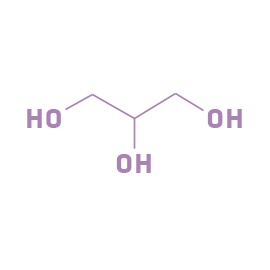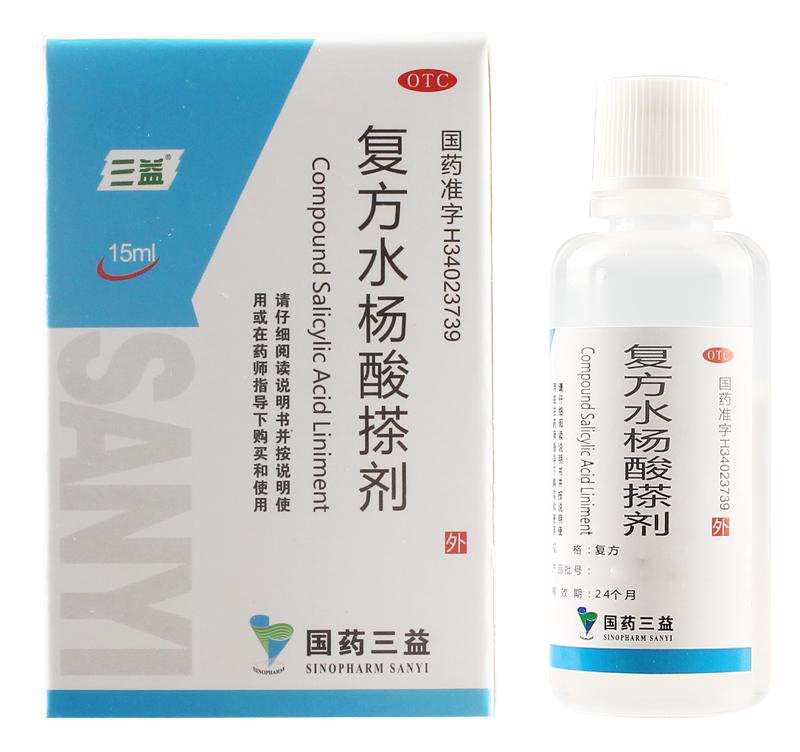
Glycerin
Quick Facts
- A natural moisturizer that’s also in our skin
- A super common, safe, effective and cheap molecule used for more than 50 years
- Not only a simple moisturizer but knows much more: keeps the skin lipids between our skin cells in a healthy (liquid crystal) state, protects against irritation, helps to restore barrier
- Effective from as low as 3% with even more benefits for dry skin at higher concentrations up to 20-40%
- High-glycerin moisturizers are awesome for treating severely dry skin
Geeky Details
Glycerin doesn’t sound very glamorous but it is a real oldie but a goodie. It’s been used in cosmetics for more than 50 years and it’s a totally natural ingredient that’s also in the outermost layer of our skin (called stratum corneum - SC).
It’s a so-called humectant type of moisturiser meaning that it helps our skin to cling onto water. A 2005 study has shown that glycerin levels correlate with skin hydration levels, so more glycerin means better hydrated skin.
As newer studies examine glycerin it turns out more and more that it’s not just a simple humectant but also does some other important things:
- It makes sure that the gooey stuff between the skin cells is neither too diluted nor too concentrated (it’s called osmoregulation)
- It helps to maintain the healthy state of the cell membranes and intracellular lipids (keeping the lipids in a nice liquid crystal state that is optimal for barrier function)
- It can normalize skin shedding in very dry skin.
- It protects against skin irritation (such as washing your face too much and/or too aggressively)
What this all means is that glycerin is a real superstar and helps to maintain the healthy state of our skin in several ways.
And there is even more. If your skin is severely dry, you have to read this. A large-scale study done with 394 guys and girls with dry skin compared two high-glycerin (containing 25% and 40% glycerin) moisturizers to 16 other popular moisturizers on the market (that had less than 6% glycerin). The two high-glycerin ones won hands down. They had superior, quick-acting hydrating properties and they also seemed to create a “reservoir” of moisture-holding ability in the skin. This means that even after not using the high-glycerin moisturizer the skin stayed hydrated longer compared to all the other low glycerin moisturizers.
You might think now that this is sooo awsome I will go to the pharmacy right now buy some glycerin and put it on my face. Well, do not do that. 100% pure glycerin is not good for the skin either. Too much glycerin (and in general humectants) might attract water out of the lower layers of the skin. That’s a problem because once water is in the upper layer some of it will evaporate. It’s called trans-epidermal-water-loss (TEWL). If too much TEWL happens your skin becomes dry. :(
This is confirmed by a study too: skin treated to 99.7% glycerin for 5 days showed that after the treatment the SC (do you remember? it’s the outermost layer of the skin) was not visibly different from the untreated control. The same study also examined skin treated with a 25% glycerin lotion and there the SC had a visibly different, expanded - in other words more hydrated - appearance.
So the thing to know about the optimal amount of glycerin is this: it is an effective molecule already from 3% (even from 1%, at least when combined with skin lipids), and the benefits tend to increase up until 20-40%. Around 10%, glycerin seems to have a reals sweet spot in terms of effects and usability. This amount is still possible to formulate into a relatively light, non-sticky and not too heavy formula (yes, glycerin is sticky and high % is really hard to formulate into a cosmetically elegant formula) but 10% also shows all the great therapeutic effects including effective moisturization with a reservoir effect, protecting against irritation, maintaining a healthy skin barrier and making the skin just smooth and plump.
So bottom line: glycerin is a real goodie and far more than a simple moisturizer. In our opinion, it is an underappreciated superstar that deserves more spotlight than it is currently getting.
Show me some proof
- Leslie Baumann, MD, Cosmetic Dermatology, 2nd edition, Glycerin- pages 275
- The Journal of investigative dermatology., 2005 Aug;125(2):288-93., Is endogenous glycerol a determinant of stratum corneum hydration in humans?
- Dry Skin and Moisturizers: Chemistry and Function, Marie Loden, Howard I. Maibach, chapter 20: Glycerol — Just a Moisturizer? Biological and Biophysical Effects







